Data modeling tools play an important role in business, representing how data flows through an organization. It’s important for businesses to understand what the best data modeling tools are across the market as well as for their specific operational needs. In this guide, TechRepublic has reviewed the top data modeling tools, discussing the pros and cons and differentiating features of each solution.
Jump to:
- What is data modeling?
- What are the top data modeling tools?
- Key features of data modeling tools
- Benefits of using data modeling tools in your business
What is data modeling?
Data modeling is the process of creating and using a data model to represent and store data. A data model is a representation — in diagrammatic or tabular form — of the entities that are involved in some aspect of an application, the relationships between those entities and their attributes.
SEE: Job description: Big data modeler (TechRepublic Premium)
Data models represent many aspects of an organization’s operations: business processes, informational needs, data required to support processes, organizational structure and systems architecture.
These models can be either conceptual, logical or physical. A good data model includes primary and foreign keys, which allow you to maintain referential integrity; this allows your database to grow without data loss. You also need design patterns like aggregate tables, lookup tables and transactional tables, all of which help to organize your data depending on its usage.
What are the top data modeling tools?
Data modeling tools are software solutions that help analysts make sense of large amounts of complex data, turning them into visual representations such as graphs, charts and diagrams. These are some of the top data modeling options on the market today:
IDERA ER/Studio

IDERA ER/Studio is a data modeling software suite for business analysts, architects and developers. It allows them to create data models for various applications and provides several components such as business data objects, shapes, text blocks and data dictionary tables. IDERA ER/Studio is an intuitive tool that is capable of easily integrating different enterprise systems, giving users full control over their data management process.
Key features
- Support for forward and reverse engineering
- Database model and metadata documentation from various types, including relational, NoSQL, Microsoft SQL Server, MySQL, big data, file-based systems, business intelligence and ETL sources
- Advanced compare and merge
- Automatic migration of foreign keys
- Data lineage capability that visually documents source/target mapping and sourcing rules
Pros
- A strong solution for developing, managing and maintaining data models at both the logical and physical levels
- Collaboration on an enterprise glossary of business terms
- Custom macros
- Time-saving naming conventions
- Capable of analyzing and improving data from various database systems
Cons
- The user interface can be improved
- Bulk importing can be improved
- Metadata can be improved
erwin Data Modeler
erwin Data Modeler by Quest is a cloud-based enterprise data modeling tool for finding, visualizing, designing, deploying and standardizing enterprise data assets. It provides logical and physical modeling and schema engineering features to assist with the modeling process.
erwin is a complete solution for modeling complex data and has an easy drag-and-drop interface for creating and modifying structures, tables and relationships. In addition, this tool provides centralized management dashboards for administrators to view conceptual, logical and physical models.
Key features
- Automated schema engineering and deployment
- Data catalog and business glossary integration
- Automated bidirectional synchronization of models, scripts and databases
- Support for forward- and reverse-engineering of database code and model exchange
- Automated data model generation
Pros
- Allows users to compare multiple models and merge the files in multiple formats
- Feature-rich
- Intuitive user interface for developers
- Supports the development of logical and physical data models
Cons
- Steep learning curve
- Some users find this tool pricey
- Customer support can be improved
IBM InfoSphere Data Architect
IBM InfoSphere Data Architect is a data modeling tool that supports business intelligence, analytics, master data management and service-oriented architecture initiatives. This tool allows users to align processes, services, applications and data architectures. Data modeling, transformation, DDL script generation, database object creation, debugging, management and SQL stored procedures and functions are all available within IBM InfoSphere Data Architect’s portfolio of features.
Key features
- Support for logical and physical data modeling
- Native data querying
- Integrates with related products like IBM Db2, IBM Informix, Oracle, Sybase, Microsoft SQL Server, MySQL and Teradata
- Maps relationships between data models
- Enables domain modeling, data model analysis, glossary and naming, and models
- Transforms data models into UML, Cubing Services, Cognos, logical-dimensional, physical-dimensional and XML schema.
- Enables domain modeling, data model analysis, and glossary and naming models.
Pros
- Ease of use
- Enables easier collaboration and integration among teams
- Rapid and easy development
- Reduced time to market
Cons
- Customer support can be improved
- The user interface can be improved
Moon Modeler
Moon Modeler is a data modeling solution for visualizing MongoDB and Mongoose ODM objects. It also supports MariaDB, PostgreSQL and GraphQL. This tool allows users to draw diagrams, reverse engineer, create reports and generate scripts to map object types to the appropriate databases in the right format.
Key features
- Exports diagrams to PDF format
- Creates interactive HTML reports
- Reverse engineers existing structures
- SSH/SSL/TLS connections
- Database modeling and schema design
- Visualization of JSON structures and nested types
Pros
- Enables faster development by allowing users to draw data models and generate code
- Ease of use and intuitive interface
- Users can change the position of fields using drag-and-drop
Cons
- No freeware
- Some users experience issues with importing raw files from SQLite or SQL
- Enums in Mongoose can be improved
DbSchema Pro
DbSchema Pro is an all-in-one database modeling solution that allows you to easily design, visualize and maintain your databases. It has many features to help you manage and optimize your data, including a graphical query builder, schema comparer, schema documentation, schema synchronization and data explorer. It can be used with many relational and NoSQL databases like MongoDB, MySQL, PostgreSQL, SQLite, Microsoft SQL Server and MariaDB.
Key features
- Relational interface
- Performance analysis
- Visual query builder
- Schema reverse engineering and synchronization
- HTML5 documentation
- Random data generator
Pros
- Compatible with relational databases and NoSQL databases
- Community edition available
- Allows users to design without being connected to the database
Cons
- Steep learning curve
- Customer service can be improved
Oracle SQL Developer Data Modeler
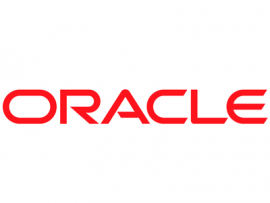
Oracle SQL Developer Data Modeler is a free graphical tool that enables users to create data models with an intuitive drag-and-drop interface. It can create, browse and edit logical, relational, physical, multi-dimensional and data-type models. As a result, the software streamlines the data modeling development process and improves collaboration between data architects, database administrators, application developers and end users.
Key features
- Forward and reverse engineering
- Imports for existing logical, multidimensional or relational models
- Naming standardization
- DDL script generation for Oracle, DB2 and SQL Server
- ER diagrams
Pros
- Intuitive user interface
- Free to use
- Supports connection to various databases
- Allows users to import data easily from text, Excel and CSV files
Cons
- Product documentation can be improved
- According to some users, the utility sometimes disconnects from the database
- The tool sometimes lags during heavy usage
Archi
Archi (Archimate modeling is an open-source solution for analyzing, describing and visualizing architecture within and across various industries. It’s hosted by The Open Group and aligns with TOGAF. The tool is designed for enterprise architects, modelers and associated stakeholders to promote the development of an information model that can be used to describe the current or future state of an organization’s environment.
Key features
- Sketch view
- Canva modeling tool kits to create and edit their canvases
- Hints view feature allows you to access element information quickly
Pros
- Ease of use
- Easy catalog creation
- Drag-and-drop functionality
- Export function
- Simplified diagramming functions
Cons
- Slow to open
- Integration with database tools is limited
MagicDraw

MagicDraw is a business process, architecture, software and system modeling tool that enables all aspects of model building. It provides a rich set of graphical notations to model data in all its complexities, from entities to tables. Its intuitive interface provides wizards for the most common types of models, including Entity Relationship Diagrams (ERD), Business Process Models and Notation (BPMN), and Object-Oriented Design Models (OO). In addition, MagicDraw supports round-trip engineering with Unified Modeling Language (UML).
Key features
- Model and diagram search engine
- Java reverse engineering and code generation
- Model decomposition
- Support for Web Application Extensions (WAE) profile and diagram
Pros
- Ease of use
- Automatic report generation
- Supports requirements management plugins, such as DOORS and RequisitePro
- Constantly adds features based on user feedback
Cons
- Steep learning curve
- The interface can be improved
- The number of features can be overwhelming and underdeveloped at times
Lucidchart

Lucidchart is an intuitive and intelligent diagramming application that makes it easy to make professional-looking flowcharts, org charts, wireframes, UML diagrams and conceptual drawings. This tool allows administrators to visualize their team’s processes, systems and organizational structure. It also enables developers to create UI mockups in a few clicks.
It has a drag-and-drop interface which simplifies the process of creating these diagrams. It also integrates with other business applications like Google Drive, Jira and Slack, which helps users to complete project work faster.
Key features
- Business process map creation
- Supports conceptual, logical and physical data modeling
- Imports and exports from SQL
- Ideal for architectural schematics
Pros
- Drag-and-drop interface
- Supports MySQL, Oracle, SQL Server and PostgreSQL
- Mobile application available
Cons
- Steep learning curve
- The user interface can be improved
- Some users complained about its lack of user-friendliness
ConceptDraw

ConceptDraw is a diagramming solution that enables users to create diagrams or download and use premade ones. The data modeling tools include: ‘Table Designer,’ ‘Database Diagrams’ and ‘Data Flow Diagram.’ Users can also create flowcharts, UML diagrams, ERD diagrams, mind maps and process charts with this solution.
Key features
- Live objects technology
- Dashboard creation
- Business processes and infographics
- MS Visio compatibility
- Communication and presentation facilities
Pros
- Supports several notations, including BPMN, Chen, IE, SysML and UML
- Project status dashboards
- Integration with other tools in the suite
- Drag-and-drop interface
Cons
- Steep learning curve
- The user interface can be improved
Key features of data modeling tools
The best data modeling tools allow you to represent information through tables, schemas, logical diagrams and entity relationship diagrams. These tools also have query-building and validation rules that allow you to validate the design before deploying it live. Key features to look out for include:
Round-trip engineering
Data modeling is often done as part of a larger cycle, which includes development or change management. A round-trip engineer ensures that when changes are made to the model, they’re reflected in both areas.
Data model import and export
Once you’ve created your data model, you’ll need to be able to import and export it as needed.
Diagram image export
You should be able to take pictures or screenshots of any diagram on the screen so that you can share them with others or store them for future reference.
Business vocabulary definition mapped to usage within models
When using a data modeling tool, you should be able to define business vocabulary terms and map them to their usage within your model. These definitions ensure that people across the company use similar terminology and concepts.
Model subsets and model validation
Data modeling tool users should be able to break down their models into subsets and then validate these pieces of the whole against common requirements. Validation gives you an idea of whether or not your model meets some specific criteria before deploying it live.
Object search
One of the most valuable things about having a data modeling tool is being able to locate certain parts of your model quickly. To do this, you need an object search function that will scan the entire document for anything matching specific criteria.
Interfaces and integration
Ideally, your data modeling tool will interface with other software programs. Doing so saves time because administrators can then automate many tasks.
ODBC/JDBC database connectivity
Whether you want to create a new model from scratch or modify one of your existing models, you should always be able to connect directly to the relevant database for whatever task.
Schema reports export
Reports provide valuable insights into how your system is functioning; it’s important to have a data modeling tool that makes creating them easy. Reports are usually generated by querying the underlying database and turning the results into something readable. They may contain any number of charts, such as bar graphs, pie charts, scatter plots and line graphs.
Chart creation
Charts offer another way to gain insights into how well your system works by presenting quantitative data intuitively.
Benefits of using data modeling tools in your business
Data modeling tools are a critical part of the modern business world, especially for data extraction, management and preparation for reporting. In order to use these tools effectively, it is important to understand the more specific benefits they offer your company.
SEE: Job description: Big data modeler (TechRepublic Premium)
For starters, data modeling can be used in both the pre- and post-processing phases of the data analytics process. As an example, data modeling can be used as a pre-processing technique to extract raw data from different sources in order to build unified datasets for analysis.
Once you have created these datasets, you can better combine them for more powerful insights. As a post-processing technique, data modeling can provide enhanced detail that users cannot glean through descriptive statistics alone. In addition, by using the advanced visualization tools that come along with data modeling software, analysts can quickly see relationships within their datasets in previously impossible ways.
These tools allow analysts to sort by specific variables, drill down into aggregated categories, pivot rows and columns, explore dimensions like time or geography, or filter results by keyword search. Data modeling tools also simplify tasks like extracting and inserting data into relational databases, building complex queries without writing code, generating accurate projections without heavy calculations and converting unstructured data formats into tabular structures.
And finally, data modeling software allows increased transparency on all levels of the analytical process, which is an important step toward true data democratization in your organization. These tools are becoming increasingly imperative to staying competitive in today’s market.








